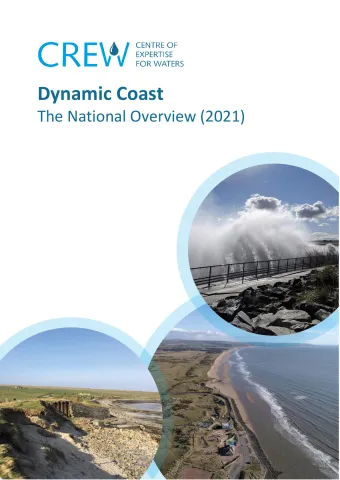Coastal erosion is widely acknowledged to be a cross cutting issue affecting disparate interests (infrastructure, cultural and natural heritage, port facilities etc.) and
a coordinated approach to align effort across sectors is essential.
The Dynamic Coast was commissioned by CREW to provide the strategic evidence base on the extent of coastal erosion in Scotland. This will support the Scottish Government and the Scottish Public Sector decision-making and indicate areas of highest coastal erosion risk, where a more detailed evidence base may be required. The initial research published in 2017 by CREW, provided businesses and communities with readily interpretable evidence and modelling, based rates. This 2021 publication updates and supersedes the 2017 work, by including increased extents of eroding shoreline and the latest climate change projections on sea level rise, with an aim to help society become ‘sea level wise’ by planning now for our changing climate.
There is international recognition that, for many countries, some of the first and most obvious effects of climate change will be through increased erosion and flood impacts on the coastline. Governments and organisations around the world are undertaking risk assessments to inform and shape new flexible adaptive approaches to better manage these growing risks. Many European partners and fellow UK administrations are searching for more sustainable approaches to address anticipated changes to our coastal assets. As relative sea level continues to rise, and storm impacts increase, many are questioning the assumption that existing artificial coastal defences should be raised and extended. The United Nations Intergovernmental Panel on Climate Change (IPCC) anticipates that the default management approach on the coast will become ‘avoidance and adaptation’ rather than the current ‘hold-the line’ via artificial defences. But where, when and how might adaptation be implemented?
Given the lifespan of Scoland’s coastal infrastructure and other assets, together with the IPCC projections of anticipate climate change, the most appropriate route forward is by framing proposals within the precautionary principle, supported by a robust evidence-base of past changes and modelling of anticipated future changes, checked against appropriate coastal monitoring.
For more information, please visit www.dynamiccoast.com and read the research summary and synopsis below.
| Attachment | Size |
|---|---|
| CRW2017_08 Synopsis | 1.62 MB |
| CRW2017_08 Research Summary | 1.19 MB |
